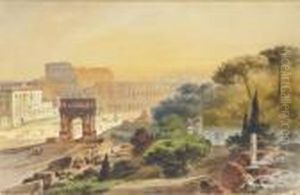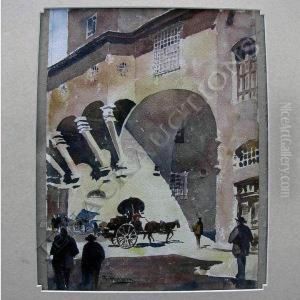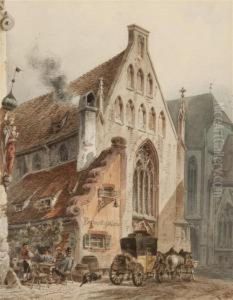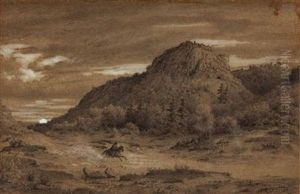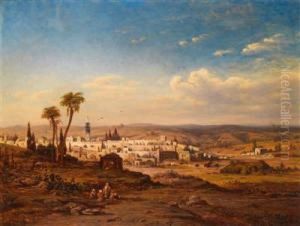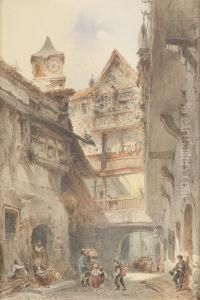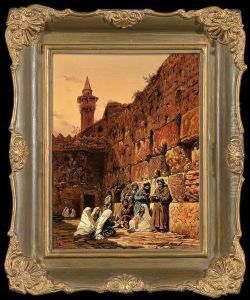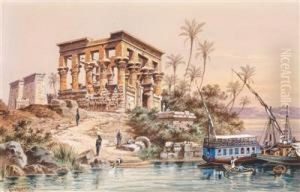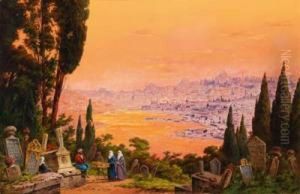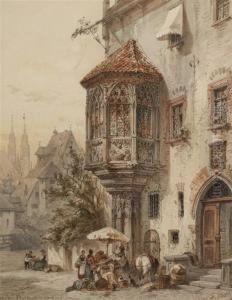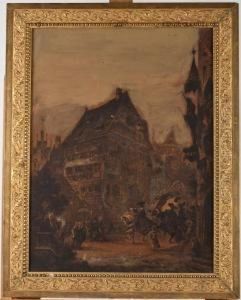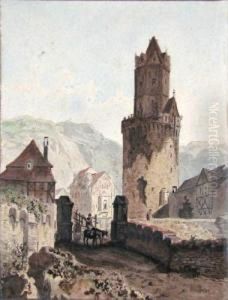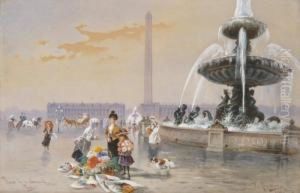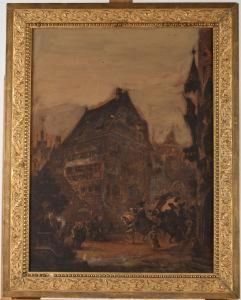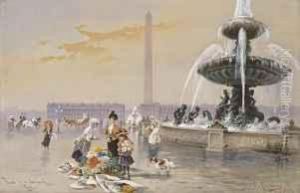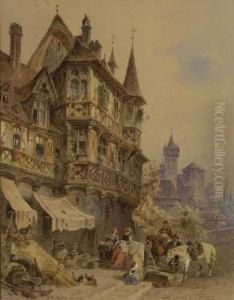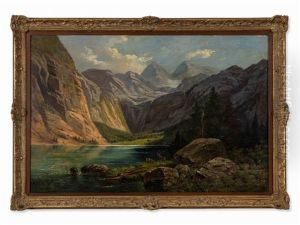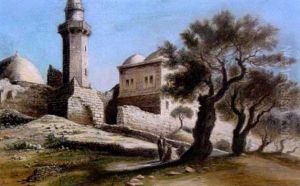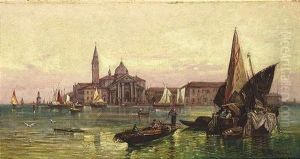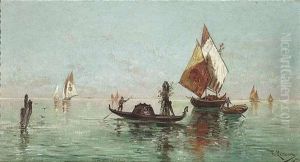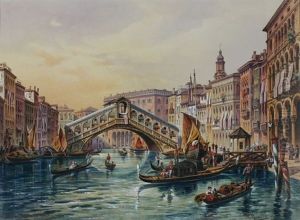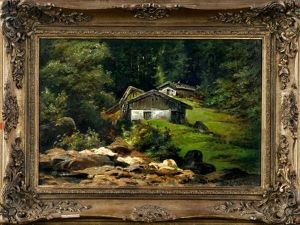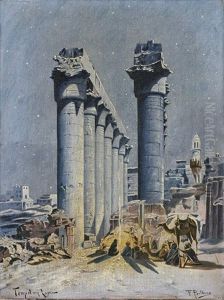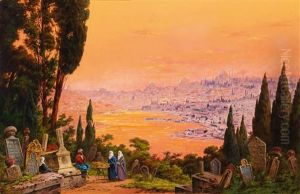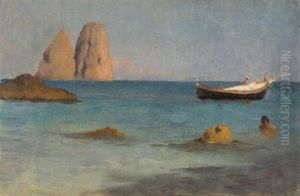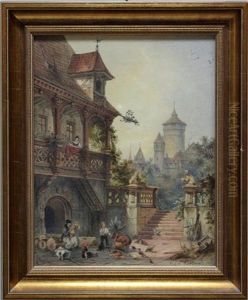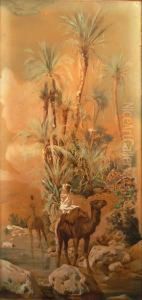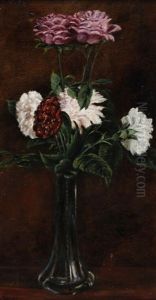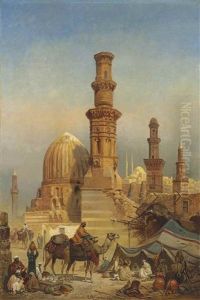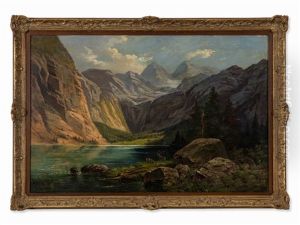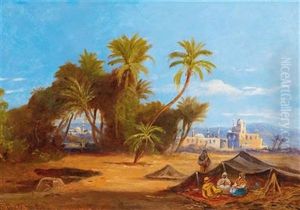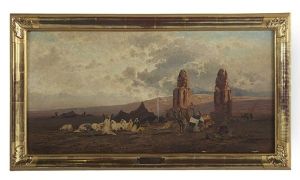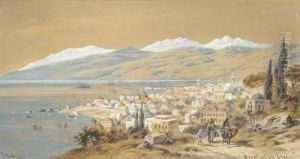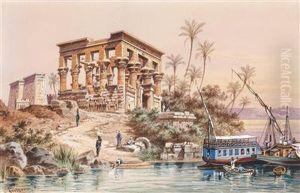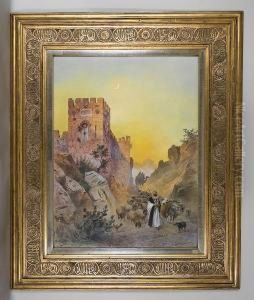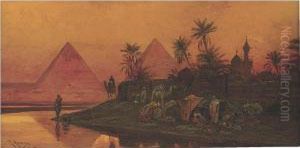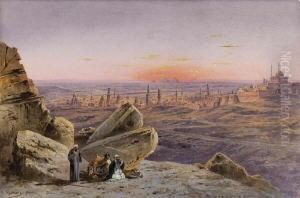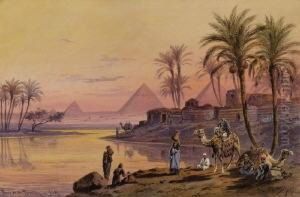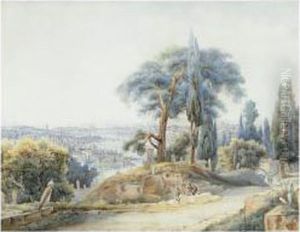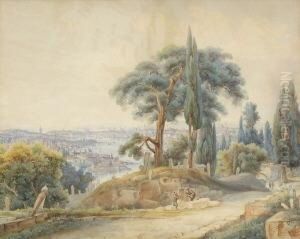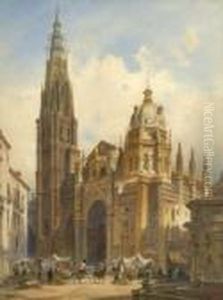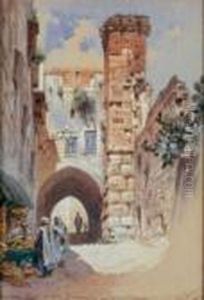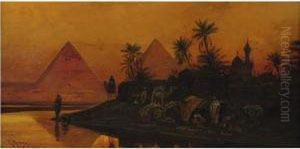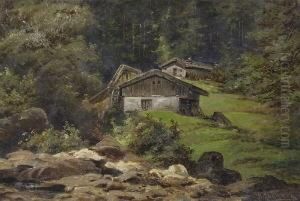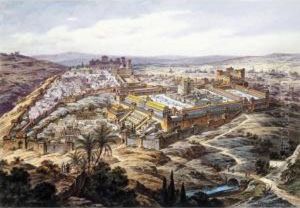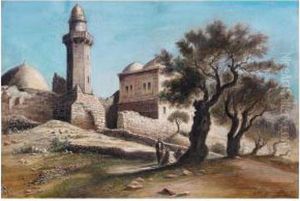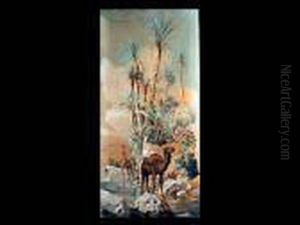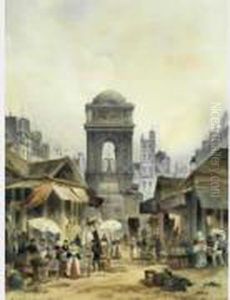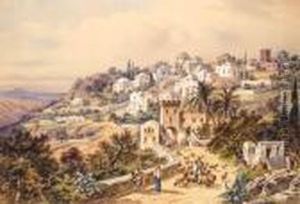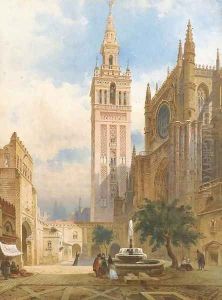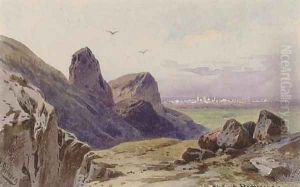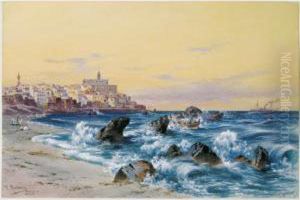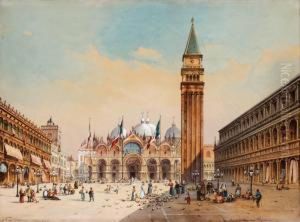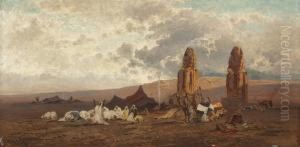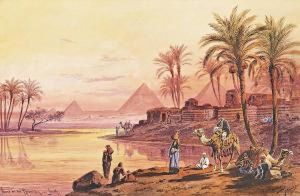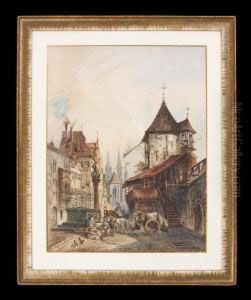Friedrich Perlberg Paintings
Friedrich Perlberg was a German painter and illustrator known for his orientalist and architectural subjects. Born on June 5, 1848, in Nuremberg, Germany, Perlberg showed an early interest in art, which was supported by his father, who was also an artist. His father, Georg Perlberg, was a well-regarded landscape and architectural painter, and Friedrich received his initial artistic training from him. Friedrich then furthered his education at the Nuremberg School of Art, and later, at the Munich Academy of Fine Arts, which was a premier institution for the arts in Germany during the 19th century.
Perlberg's painting style was influenced by the orientalist trend that was popular among European artists at the time. This movement was characterized by a fascination with the cultures, people, and landscapes of North Africa and the Middle East. After his studies, Perlberg embarked on travels to these regions, which had a profound impact on his artistic work. He visited Egypt and the Near East, where he became captivated by the light, architecture, and daily life of these exotic locales. His experiences would become the subjects of many of his future paintings.
Throughout his career, Perlberg made a name for himself with his depictions of grand architectural scenes, often imbued with a sense of historical romanticism. His works often featured ancient monuments, bustling marketplaces, and scenic vistas, painted with a keen eye for detail and a masterful use of color to capture the unique atmosphere of the oriental landscape. Perlberg’s illustrations and paintings were well received, and he gained a reputation for his ability to blend accuracy with artistic flair.
Perlberg's contributions to the field of orientalist painting were part of a larger European engagement with the East, which was facilitated by the colonial expansions of the period. Though his works may be viewed today through a critical lens that acknowledges the context of colonialism and exoticism, they remain important artifacts of cultural and artistic history.
Friedrich Perlberg died on February 2, 1921, in Munich, Germany. His works continue to be of interest to collectors and scholars of orientalist art, and they offer insight into the 19th-century European perspective of the Middle East and North Africa.
